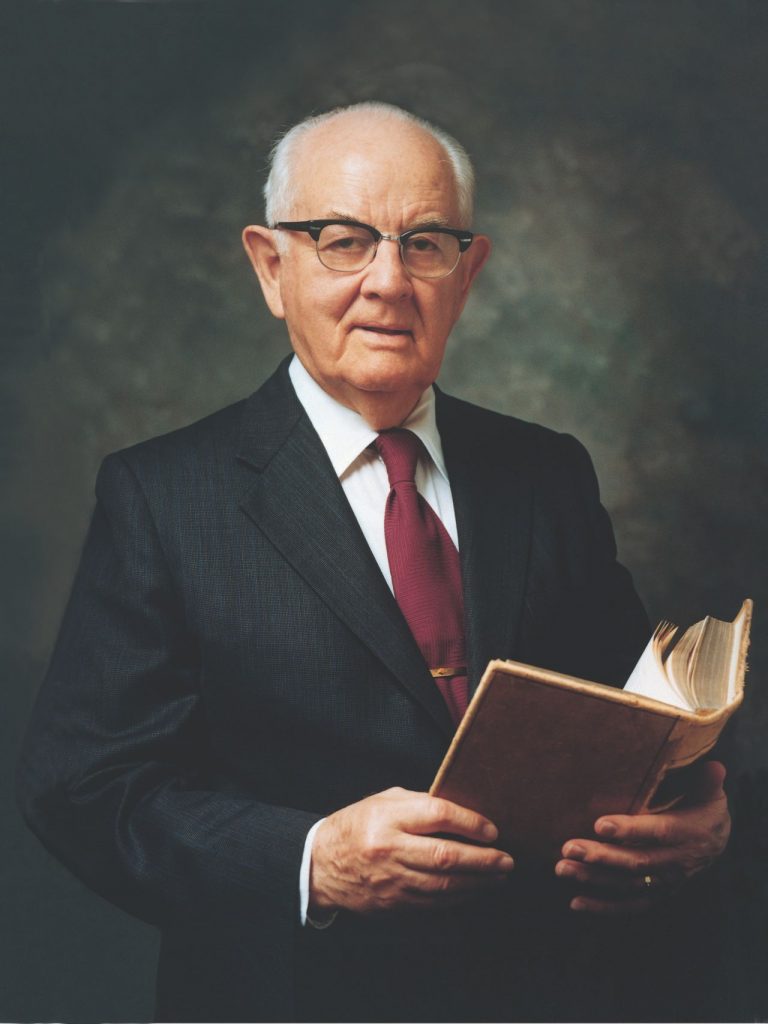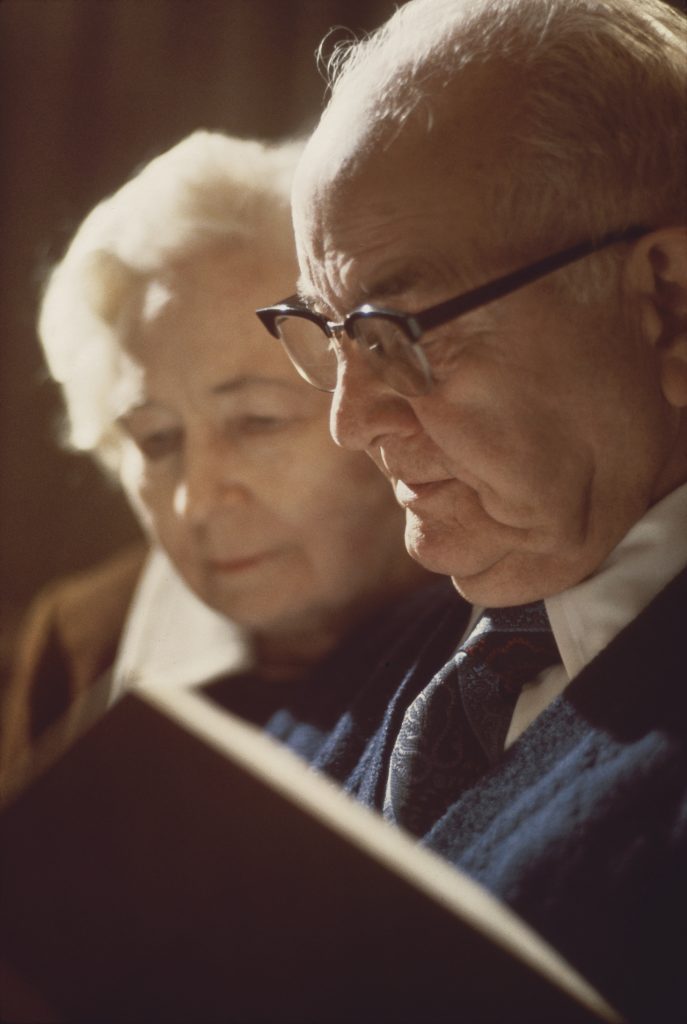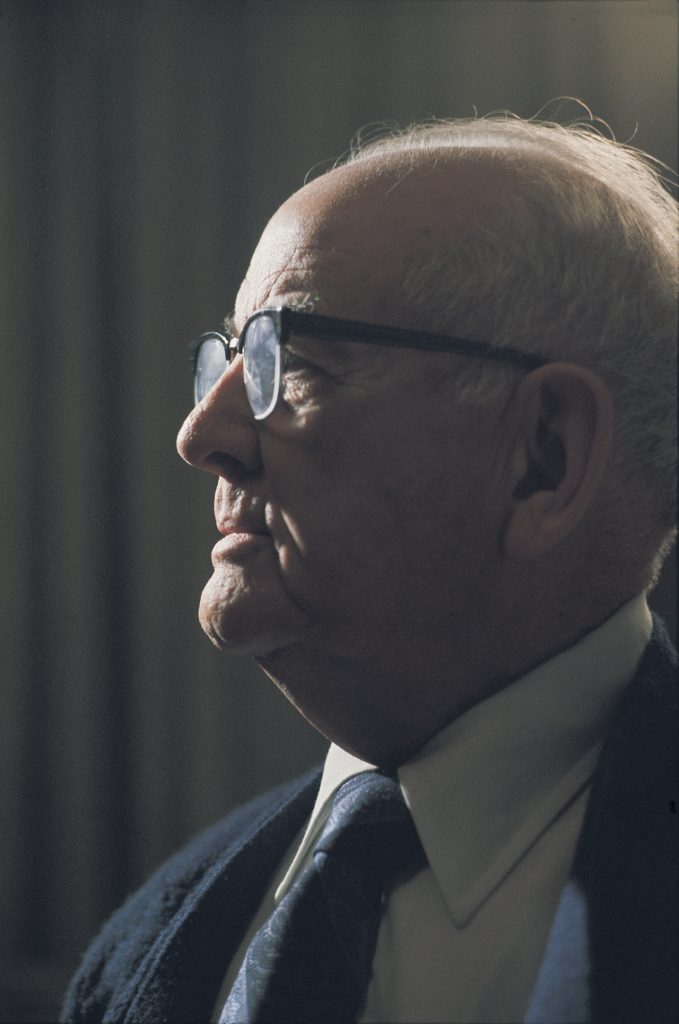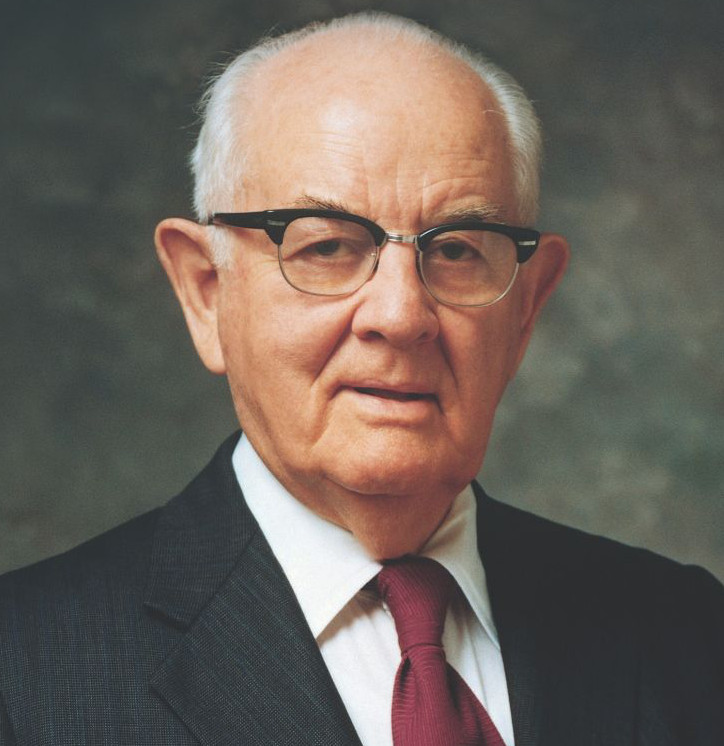Spencer Woolley Kimball
(1895-1985)






By Susan Easton Black
“I have dedicated him to the Lord and to His service,” said Andrew Kimball of his son Spencer. “He will become a mighty man in the Church.” At age fifteen, Spencer took “the family Bible, climbed the stairs to his attic room, … and began [reading] at Genesis.” For about a year, he read nightly “until he could shut the book with great pride, [and say] finished.”1
Spencer attended the LDS Academy in Thatcher, Arizona. He was popular with the students and every year was elected class president. More important to him than being president was playing on the school’s basketball team. “I would rather play this game than eat,” he said.
After graduating from the LDS Academy, Spencer received a call to serve in the Central States Mission. As a junior companion, he struggled on the mission. Of his senior companion, he said, “[He] tried my soul.” Spencer baptized five people on his mission, but he admitted that “they were probably more the fruits of the work of other missionaries who preceded me.”2
When he returned to Thatcher, Spencer saw a photograph in the local newspaper of Camilla Eyring, a new home economics teacher at the Gila Academy. “There’s my wife. I am going to marry her,” he said.3 Their courtship lasted thirty-one days. Spencer and Camilla married in Thatcher. To support his young bride, Spencer played the piano for orchestras and wrote for a newspaper until landing a job at a bank and later at an insurance company. As for service in the Church, Spencer was willing to serve from his early days as a deacon. He held many local positions in Thatcher, including being a stake president.
On July 8, 1943, Elder J. Reuben Clark telephoned Spencer and said, “The brethren have just chosen you to fill one of the vacancies in the Quorum [of the Twelve Apostles].” Spencer replied, “I am so weak and small and limited and incapable. Of course, there could be only one answer to any call from the Brethren.” As he shared news of his call with family and friends, one said, “It’s clear the Lord must have called you—no one else would have thought of you.” Spencer was ordained an apostle of the Lord Jesus Christ by President Heber J. Grant. He was told by President Grant to “set your heart upon the service of the Lord thy God.”4
Much of the service that Spencer rendered as a member of the Quorum of the Twelve Apostles was directed to the posterity of Father Lehi. In 1965 he told President David O. McKay, “I think the time of the Lamanite has come for them to hear the Gospel.” President McKay replied, “Yes, it is time and … you are the one of the Twelve who has the vision of it.”5
With Father Lehi’s children ever front and center on his mind, Spencer sought opportunities to meet with the Saints in the Americas. But whether the Americas, Asia, Europe, or Africa, he was always anxious to meet the Saints and shake hands with them. One member commented about his strong handshake. Spencer said, “I milked cows the first half of my life so I could shake hands the other half.”6
Of all the places Spencer saw in his many travels around the earth, it was the Garden Tomb in Jerusalem, where the body of Jesus may have lain, that left the most lasting impression. Believing the atonement and death of Jesus were the greatest blessing to mankind, he wrote The Miracle of Forgiveness and Faith Precedes the Miracle.
For many years Spencer suffered from health issues—paralysis, heart problems, throat cancer, and Bell’s palsy. But in his suffering, he rarely let it slow him down. President Harold B. Lee remarked, “Spencer lives from blessing to blessing.”7
On December 30, 1973, Spencer became president of The Church of Jesus Christ of Latter-day Saints. During his administration, his slogans were “Lengthen your stride” and “Just do it.” These slogans spurred Latter-day Saints to move forward the Church and Kingdom of God. The Church moved forward at an unprecedented rate in his administration when it was revealed that all worthy male members of the Church had the right to hold the priesthood (see Official Declaration 2).
Spencer died at age ninety. Of him, President Ezra Taft Benson said that he had a “humble dependence on the Lord.”8
1. Edward L. Kimball and Andrew E. Kimball Jr., Spencer W. Kimball (Salt Lake City: Bookcraft, 1977), 56–57, 196.
2. As cited in Kimball and Kimball Jr., Spencer W. Kimball, 65, 75, 79.
3. As cited in Kimball and Kimball Jr., Spencer W. Kimball, 83.
4. As cited in Kimball and Kimball Jr., Spencer W. Kimball, 189, 198, 205.
5. As cited in Kimball and Kimball Jr., Spencer W. Kimball, 361.
6. As cited in Kimball and Kimball Jr., Spencer W. Kimball, 407.
7. As cited in Kimball and Kimball Jr., Spencer W. Kimball, 401.
8. Don L Searle, “President Ezra Taft Benson, Ordained Thirteenth President of the Church,” Ensign, December 1985.

